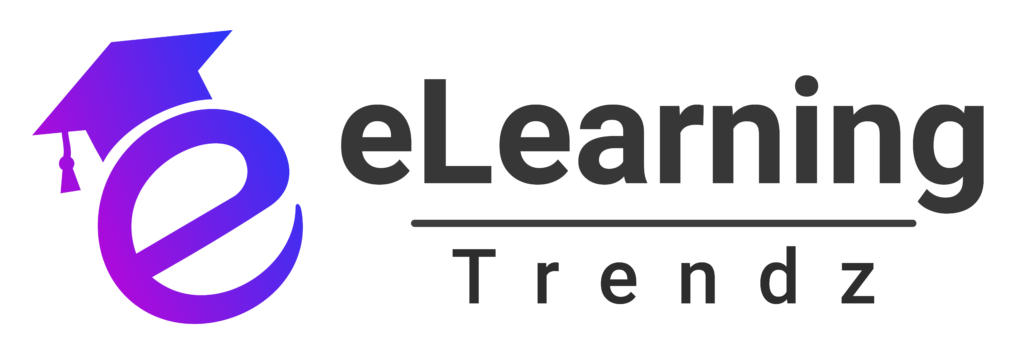Learning Management Systems (LMS) have become an integral part of modern education and corporate training. However, with the increasing demand for personalized learning experiences, automation, and real-time support, AI chatbots are quickly becoming a game-changer for LMS platforms. These intelligent tools can assist both learners and administrators by streamlining processes, offering immediate support, and enhancing user engagement.
In fact, according to a 2022 report by PwC, 45% of learners stated that they prefer using chatbots for personalized learning and real-time assistance. With advancements in Natural Language Processing (NLP) and machine learning, AI chatbots are capable of understanding and responding to learner queries, automating administrative tasks, and providing a seamless and interactive learning experience.
In this blog, we will explore 6 transformational use cases of AI chatbots in LMS, and how they can enhance the learning journey, improve training outcomes, and support educators and organizations.
24/7 Learner Support
Best for: Immediate Assistance and Enhanced Engagement
One of the primary advantages of AI chatbots in LMS is their ability to provide 24/7 learner support. Traditional LMS platforms often rely on human support staff to assist learners, but AI chatbots can instantly respond to inquiries, offer guidance, and resolve issues, regardless of the time of day. This is especially beneficial for learners in different time zones, enabling them to get help when needed without delays.
How it works:
- AI chatbots can answer common questions about course content, deadlines, technical issues, and more.
- They provide a consistent and immediate response to help learners stay on track.
- They can even escalate issues to human support if necessary, creating a seamless handoff between AI and real staff.
Example: A learner may inquire about the submission deadline for an assignment. The chatbot immediately provides the correct information, eliminating the need for the learner to wait for human intervention.
Personalized Learning Experience
Best for: Tailored Content and Course Recommendations
AI chatbots can use data from learners’ previous interactions, preferences, and progress to offer a personalized learning experience. By analyzing a learner’s behavior and performance, AI chatbots can recommend specific courses, modules, or resources to help them reach their learning goals more effectively.
How it works:
- Chatbots track learners’ progress through courses, assessments, and modules.
- Based on performance, the chatbot suggests additional learning materials or even alternative courses.
- Learners can interact with the chatbot to get personalized guidance on what to learn next.
Example: If a learner struggles with a particular programming concept, the chatbot can suggest remedial courses or additional reading to reinforce their understanding.
Automated Administrative Tasks
Best for: Streamlining Course Management and Reducing Administrative Load
LMS administrators often face the challenge of managing large amounts of administrative work, such as enrolling students, issuing certificates, tracking course progress, and maintaining learner data. AI chatbots can automate these administrative tasks, freeing up valuable time for educators and administrators to focus on more strategic initiatives.
How it works:
- Chatbots can automate tasks like course registration, user onboarding, certificate generation, and report creation.
- They can send reminders about upcoming assignments, exams, and deadlines to keep learners on track.
- They can manage routine inquiries, allowing human staff to focus on more complex issues.
Example: After a learner completes a course, the chatbot can automatically issue a completion certificate and send a follow-up email with recommendations for next steps.
Instant Feedback and Assessment Support
Best for: Real-Time Assessment Insights
AI chatbots can provide learners with real-time feedback after they complete assignments, quizzes, or exams. This immediate feedback allows learners to understand their performance and areas for improvement without waiting for manual grading. AI chatbots can analyze test results, identify patterns in learners’ mistakes, and offer personalized recommendations.
How it works:
- Chatbots can automatically grade quizzes, tests, and assignments.
- They provide instant feedback, helping learners understand their mistakes and correct them.
- Chatbots can suggest resources to improve in weak areas based on quiz results.
Example: After a learner submits a coding challenge, the chatbot provides instant feedback, highlighting errors in syntax, suggesting resources for improvement, and offering a step-by-step guide to fixing the code.
Boosting Learner Engagement Through Interactive Conversations
Best for: Keeping Learners Engaged and Motivated
AI chatbots can drive higher engagement by offering interactive, gamified conversations and support throughout the learning process. By adding a conversational and fun element to the learning experience, AI chatbots motivate learners to continue their courses and achieve better outcomes.
How it works:
- Chatbots can use gamification techniques like quizzes, challenges, and progress tracking to make learning more engaging.
- They can offer rewards, badges, and certificates to learners for completing tasks or achieving milestones.
- Chatbots also ask learners for feedback, giving them a voice in how the course is structured.
Example: After completing a module, a chatbot congratulates the learner, provides a badge or certificate, and asks if they would like to take a quiz or get personalized recommendations for the next module.
Data-Driven Analytics and Insights for Educators
Best for: Analyzing Learner Behavior and Course Effectiveness
AI chatbots not only help learners but also provide valuable insights for educators and administrators. By collecting data on learner interactions, chatbots can generate reports and analytics on course effectiveness, learner behavior, and areas that require improvement. This data-driven approach allows for more informed decision-making and targeted course improvements.
How it works:
- Chatbots collect and analyze data from learners’ interactions with the LMS (e.g., course progress, quiz scores, time spent on modules).
- They generate reports for instructors, highlighting trends such as struggling learners or needing more support.
- These insights allow instructors to adjust course content or provide additional support where needed.
Example: An instructor receives a report from the chatbot showing that a high percentage of learners are struggling with a specific concept. The instructor can then adjust the curriculum to address these gaps.
Conclusion
AI chatbots are transforming the Learning Management System (LMS) landscape by providing immediate support, enhancing learner engagement, automating administrative tasks, and offering personalized learning experiences. As AI technology evolves, LMS platforms that integrate chatbots will only become more sophisticated, offering more advanced features like real-time assessment, data analytics, and even emotional support to learners.
From improving course management and learner support to offering instant feedback and personalized recommendations, AI chatbots are revolutionizing the way both learners and administrators interact with LMS platforms. As the demand for more efficient, scalable, and engaging training solutions grows, AI chatbots will play a critical role in shaping the future of learning.
Embracing AI-powered chatbots in your LMS will help you stay ahead of the curve, offering a smarter, more personalized learning experience that drives success for both learners and organizations.










